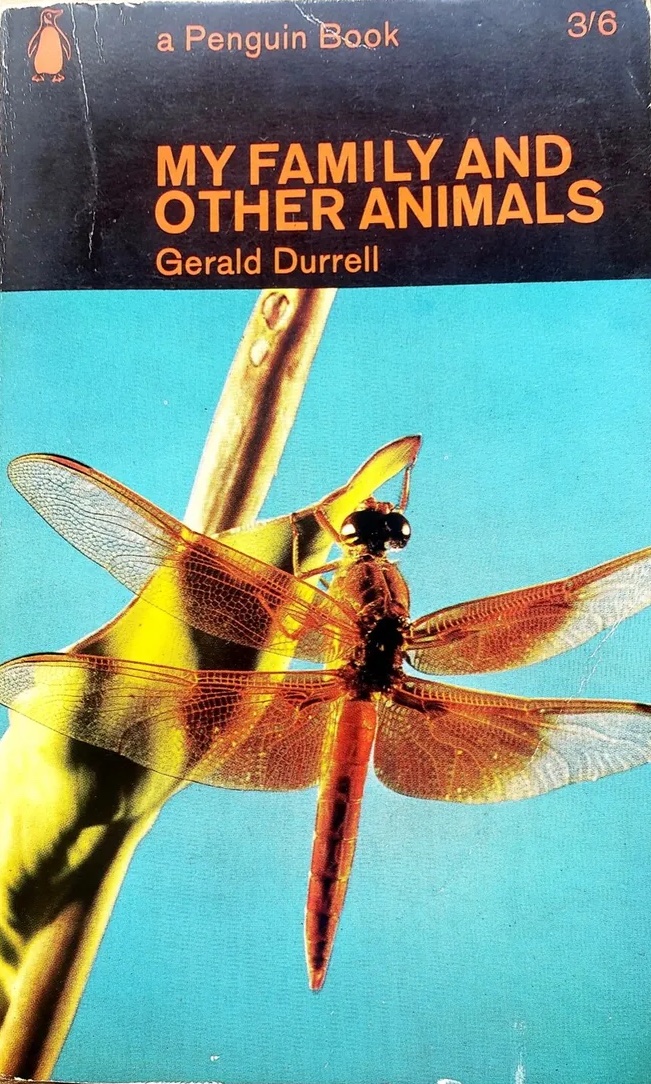The DECODER series — to which SEMIOVOX has invited our semiotician colleagues from around the world to contribute — explores fictional semiotician-esque action as depicted in books, movies, TV shows, etc.
At the ages of 8–9, I read and re-read My Family and Other Animals, the British naturalist Gerald Durrell’s 1956 memoir about his family’s pre-WWII adventures on Corfu. Although my father was Greek, I lived in those days in a small town in Siberia. Greece seemed impossibly distant and mysterious; I wouldn’t visit it until I was 11. So I was intrigued by the story of a 10-year-old exploring the wonders of a Greek island.
Young Gerald, who doesn’t attend a school, spends every waking hour in the garden, in the forest, and on the beach — studying the habits of insects, mammals, birds, fish. Durrell is so talented at observing, and at describing his observations in engaging ways — so I was riveted by every little detail. I vividly remember a picturesque depiction of a fight between a praying mantis and a gecko, which stretched on for several pages.
Geronimo slid slowly from the wall, gulping with fury, until about three feet away from the mantis he paused and shifted his feet in turn to make sure that his grip was good. Cicely, with well-simulated astonishment, appeared to notice him for the first time. Without changing her position she turned her head round and peered over her shoulder. Geronimo glared at her and gulped harder. Cicely, having surveyed him coolly with her bulging eyes, continued her inspection of the ceiling as if the gecko did not exist. Geronimo edged forward a few inches, scuffled his toes once more and the tip of his tail twitched. Then he launched himself forward….
It’s impossible to quit reading this scene until its final moments. It’s more exciting than most football games. I’d love to reach this level of proficiency in my semiotic reports — if only the life of brands could ever be so fascinating.
The book’s title suggests that Gerald views his own family as “animals” whose behavior is every bit as unusual and amusing as that of geckos and praying mantises. He’s right! His depiction of the emotional lives and motivations of his mother and siblings, and the Corfu locals with whom they interact, is equally fascinating. Durrell was ahead of his time as a biosemiotician — someone straddling the semiotic threshold between humans and the rest of the world. And he offers an important lesson to semioticians: There’s no reason ever to be bored; there’s always something to decode.
A year ago, I brought my own children — aged 9 and 12 — to live on a non-touristy, authentic Greek island. For me, it was My Family and Other Animals all over again. In some ways, very little has changed in nearly 90 years. Including the scene in the book’s first chapter, where Gerald’s mother complains to the local realtor that none of the houses he’s shown them has a bathroom.
“But Madame,” he wailed in genuine anguish, “what for you want a bathroom? Have you not got the sea?”
I spend a lot of time wandering around the island, decoding — animals and humans alike. I’m amazed by the islanders’ uncommon tranquility and their inner freedom. I’m delighted by the absence of social hierarchy, the way I’ve known it in Moscow and Athens. And I’m still puzzling out the mix of cultures dominated by the local values.
If only my children were as excited about flora and fauna as they are about video games…. We’re already feeding the goats, and we’ve adopted a kitten. So maybe the island’s vibe will seduce them, too.
DECODER: Adelina Vaca (Mexico) on ARRIVAL | William Liu (China) on A.I. ARTIFICIAL INTELLIGENCE | Tim Spencer (England) on VURT | Ramona Lyons (USA) on BABEL-17 | Rachel Lawes (England) on NICE WORK | Alfredo Troncoso (Mexico) on THE ODYSSEY | Gabriela Pedranti (Spain) on MUSIC BOX | Charles Leech (Canada) on PATTERN RECOGNITION | Lucia Laurent-Neva (England) on LESSONS IN CHEMISTRY | Whitney Dunlap-Fowler (USA) on THE GIVER | Colette Sensier (England / Portugal) on PRIESTDADDY | Jamin Pelkey (Canada) on THE WONDER | Maciej Biedziński (Poland) on KOSMOS | Josh Glenn (USA) on LE GARAGE HERMÉTIQUE | Antje Weißenborn (Germany) on BABYLON BERLIN | Ximena Tobi (Argentina) on SIX FEET UNDER | Mariane Cara (Brazil) on ROPE | Maria Papanthymou (Greece) on MY FAMILY AND OTHER ANIMALS | Chirag Mediratta (India) on BLEACH | Dimitar Trendafilov (Bulgaria) on THE MATRIX | Martha Arango (Sweden) on ONE HUNDRED YEARS OF SOLITUDE | Becks Collins (England) on THE HITCHHIKER’S GUIDE TO THE GALAXY | Ivan Islas (Mexico) on THE NAME OF THE ROSE | Paulina Goch-Kenawy (Poland) on THE SENSE OF AN ENDING | Eugene Gorny (Thailand) on SHUTTER ISLAND & FRACTURED.
Also see these international semio series: COVID CODES | SEMIO OBJECTS | MAKING SENSE WITH… | COLOR CODEX | DECODER


